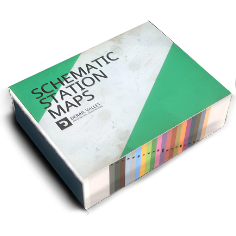Dynamic Brake: Difference between revisions
Appearance
Marked this version for translation |
m Tweaks |
||
| Line 1: | Line 1: | ||
<languages /> | <languages /> | ||
<translate> | <translate> | ||
Dynamic brake is a {{pll|Braking Overview|braking system}} type designed to aid {{pll|Brake Shoes|mechanical brakes}} when slowing down {{pll|Rail Vehicle Types|trains}}. | |||
<!--T:1--> | <!--T:1--> | ||
It is featured by some {{pll|Rail Vehicle Types|locomotives and railcars}}, made possible by their specific {{pll|Powertrains Overview|powertrains}}. Because dynamic brakes don't rely on {{pll|Train Brake|train brakes}}, they help reduce wear and friction on the {{pll|Brake Shoes|brake shoes}}. | |||
<!--T:3--> | <!--T:3--> | ||
Depending on the powertrain type, there are different types of dynamic brakes, such as {{pll|Rheostatic & Regenerative Brake|rheostatic}}, {{pll|Hydrodynamic Brake|hydrodynamic}} and {{pll|Engine & Compression Brake|engine}} brakes. | |||
</translate> | </translate> | ||
[[Category:Braking|6]] | [[Category:Braking|6]] | ||
Revision as of 21:00, 17 March 2025
Dynamic brake is a braking system type designed to aid mechanical brakes when slowing down trains.
It is featured by some locomotives and railcars, made possible by their specific powertrains. Because dynamic brakes don't rely on train brakes, they help reduce wear and friction on the brake shoes.
Depending on the powertrain type, there are different types of dynamic brakes, such as rheostatic, hydrodynamic and engine brakes.
